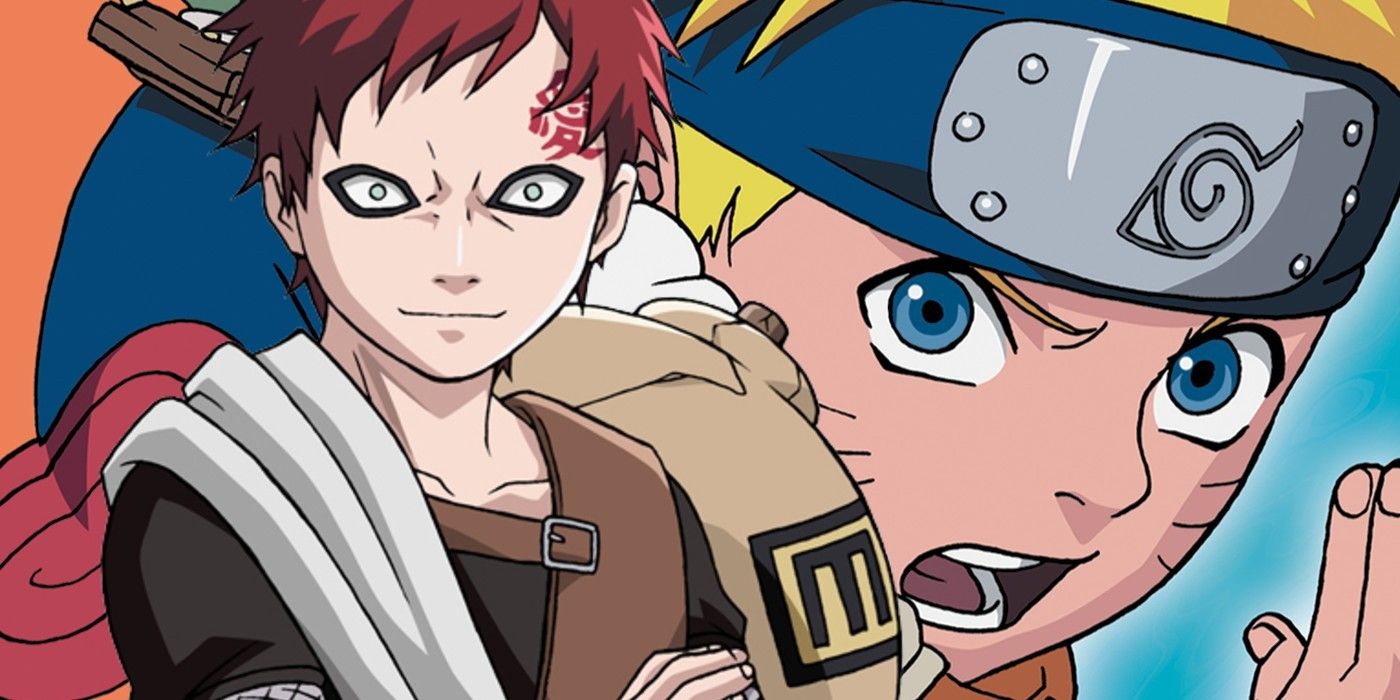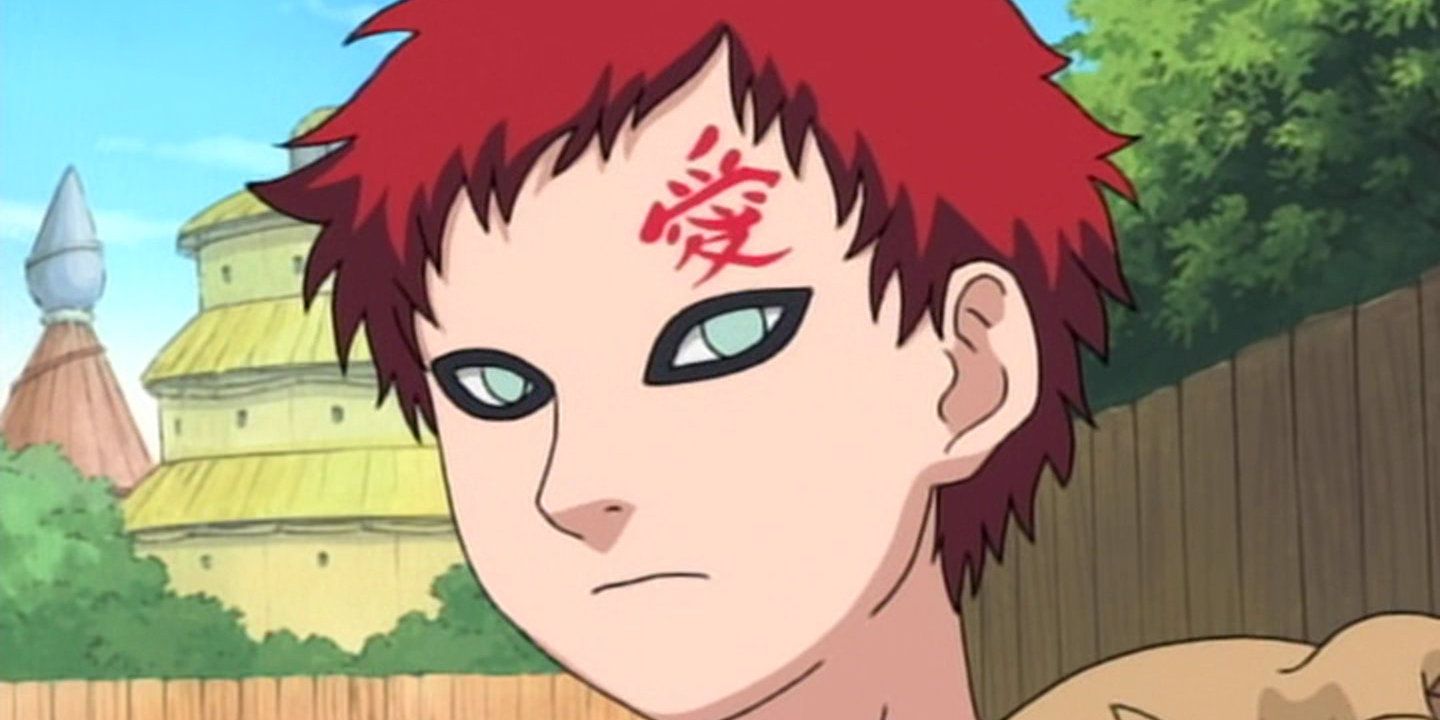Naruto and Gaara's similar childhoods serve a very important purpose in Masashi Kishimoto's anime and manga epic. Growing up wasn't exactly easy for Naruto Uzumaki. When Konoha Village was attacked by the Nine-Tailed Demon Fox, the freshly-born Naruto became the beast's new vessel. With his parents sacrificing themselves to complete the ritual, Naruto grew up an orphan, totally unaware of the beast inside him and the identities of his mother and father. Villagers aimed their hatred of the Nine Tails towards young Naruto, but while he didn’t understand the reason behind their resentment, Naruto Uzumaki remained an unerringly positive and tenacious child, playing pranks to get attention and training to become Hokage.
Gaara of the Sand first appeared during the Chunin exams, and immediately displayed his villainous tendencies and unwavering bloodlust, almost crippling poor Rock Lee. Gaara was key in Orochimaru's plot to attack Konoha, and the invasion boiled down to Naruto taking on this dangerous Sand Genin. Eventually, Naruto managed to knock some sense into his opponent with a well-aimed headbutt. Defeated, Gaara recognized that there was more to life than killing, and formed a strong bond with Naruto that lasted through the rest of the story.
Although Gaara was one of Naruto's first major enemies, there are many similarities between the two. Naruto and Gaara's fathers were both Kage in their respective villages, and both at least partially responsible for their sons' suffering. The Fourth Kazekage planned for Shukaku to be sealed within Gaara, but later regretted this decision and plotted multiple assassination attempts against his own son, breeding a darkness within him. Minato was nothing like the evil, cold-hearted Kazekage, but despite having good intentions, his decision to seal the Nine Tails in Naruto proved a source of great pain for his young son. Meanwhile, Naruto and Gaara both lost their mothers on the night they were born; Gaara's didn’t survive childbirth and Kushina shielded her son from the Nine Tails.
Aside from their parentage, Naruto and Gaara walked similar paths as youngsters. Both boys were Jinchuriki for their villages, unwillingly housing powerful tailed beasts. Consequently, they were feared and rejected by their peers, and struggled to form relationships. The lure of the tailed beasts also meant Naruto and Gaara were targeted by villains such as the Akatsuki, putting them in constant danger. Fortunately, the pair both possessed formidable latent abilities. Gaara was undoubtedly the more natural ninja and could manipulate sand from an early age, but Naruto possessed immense chakra reserves even as a child, and was revealed to be the reincarnation of the Sage of Six Paths' son.
The similarities between Naruto and Gaara continue even beyond Naruto Shippuden, as both men befriend the tailed beasts they once resented and become Kage themselves, finally gaining the respect of their villages. As leaders in Boruto: Naruto Next Generations, the pair share similar ideologies, focusing their efforts on molding and nurturing the next generation.
These parallels are far from coincidental. Masashi Kishimoto's intention when introducing Gaara was to show how easily Naruto's path could've been much darker under different circumstances. Even though they both experience the same tragedies and hardships during youth, Naruto ends up a gutsy, compassionate ninja dedicated to his friends, whereas Gaara is a bitter and twisted sadist with a grudge against the world. These vastly different personalities, despite similar journeys, highlight how important Naruto's upbeat attitude and determination to keep pushing through hardship were in his development. If he’d given into anger and resentment like Gaara, Naruto easily could've become the villain of his own story.
The direct comparison between Naruto and Gaara serves the secondary purpose of highlighting Naruto's capacity for kindness and empathy. Gaara is the first big villain Naruto successfully talks around (the famous 'Talk no Jutsu'), setting his sandy foe on the path to redemption, but this is only possible because Naruto can directly relate to his opponent's suffering. The same theme recurs with Nagato; once again Naruto sees common traits shared with his enemy, and successfully forces them to see the error of their ways. Nevertheless, Naruto's bond with Gaara remains the most prominent and meaningful comparison in Naruto's story.


